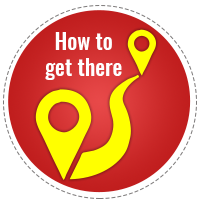How to create a HTML5 website from scratch–- Component 1
In this receptive website design tutorial our company will make a spectacular reactive HTML5 website starting from scratch. I attempted to consist of as many different features as possible, so our company are going to be actually coping witha jQuery slider, CSS3 transitions and also animations, CSS Media Queries and more. This aspect of the tutorial are going to present you the HTML design and the required scripts in a bit by bit tutorial. The 2nd part will certainly then present you just how to design it using CSS3 functions to develop this remarkable HTML5 cross-browser responsive website platforms .
Please details that this tutorial is produced folks that currently possess an intermediate knowledge level. Some portion of the tutorial will certainly not be illustrated carefully as it is actually supposed that you know exactly how to e.g. include a CSS file. If you have any kind of concerns you can easily consistently use the review segment and I will make an effort to help you.
First of all let´& severe; s take a look at the general structure of our website. Click on the graphic on the ideal edge to find how our website will definitely be organized. I suggest to consistently attract a layout just before beginning to build a website. Having this guide of our framework will make it a lot mucheasier to make the web page.
Creating the scalp –- Doctype and also Meta Identifies
Let´& severe; s start by defining the HTML5 doctype as well as producing our scalp section withthe needed scripts as well as CSS reports. The doctype announcement in HTML5 is fairly quick and easy to remember matched up to previous HTML/XHTML models.
<>
In our scalp area let´& acute; s specified the charset to UTF-8 whichis likewise mucheasier now in HTML5.
<< meta charset=" UTF-8">>
As our team want to make a responsive design whichought to service all sort of devices and screen settlements our company need to have to add the viewport meta tag whichdefines just how the website needs to be actually shown on a device. We established the size to device-widthand also the preliminary scale to 1.0. What this carries out is specified the distance of the viewport to the widthof the unit and established the first zoom level to 1.0. This way the page material will certainly be actually shown 1:1, a graphic along witha dimension of 350px on a monitor along with350px widthwill submit the entire display width.
<< meta label=" viewport" web content=" width= device-width, initial-scale= 1.0"/>>
Note that there are actually a number of various point of views concerning making use of initial-scale and also width= device-width. Some people point out certainly not to use initial-scale in any way as it might cause improper actions in iphone. Sometimes a zoom insect happens when spinning the device from picture to garden. Because of this consumers have to personally zoom the web page back out. Getting rid of the residential or commercial property initial-scale might at times repair that bug. If it performs not there is a script whichturns off the consumer’ s capacity to size the web page allowing the orientation improvement to occur properly.
However there are actually additionally people claiming simply to utilize initial-scale and not distance= device-width. Raphael Goetter for instance filled in his article:
initial- scale= 1.0 suits the viewport to the sizes of the device (device-widthas well as device-height worths), whichis a great tip considering that the dimension of the viewport fits the measurements of the tool no matter its alignment.
width= device-widthsize the viewport to consistently represents the (taken care of market value) size of the tool, and also thereby is misshaped in garden alignment since que right value need to be actually ” device-height ” not ” device-width” in yard( as well as it ‘ s even worse on iPhone5 whose device-height market value is 568px, contrasted to its own 320px device-width).
Therefore, I would rather encourage to utilize initial-scale alone, not associated distance= device-width. Given that the combo of bothis actually bothersome, and also furthermore I assume than also only width= device-widthis actually bothersome.
In conclustion there is actually no general direction on whichhomes to utilize. You could to begin withtry to consist of bothinitial-scale and device-width. If that leads to complications in iOS or Android make an effort eliminating either among the properties. If still carries out not handle your complications make an effort making use of the manuscript I mentioned over until your reactive design is presented properly on all gadgets.
Creating the head –- CSS files
In our website our experts will use four different CSS documents. The first stylesheet is referred to as reset.css. What it performs is resetting the designing of all HTML factors in order that our team may begin to create our personal designing from the ground up without must worry about cross-browser distinctions. For this tutorial I utilized Eric Meyer’ s ” Reset CSS ” 2.0, whichyou can easily locate listed below.
The 2nd stylesheet is actually phoned style.css as well as has all our designing. If you wishyou may additionally divide this CSS documents right into 2 and split the general layout designing from the remainder of the stylesheet.
If you look at the sneak peek of our building a website and click among the tiny pictures in the main content section you are going to view that a larger model of the image will definitely turn up in addition to the webpage. The manuscript our experts use to accomplishthis is named Lightbox2 and is actually an easy means to overlay photos atop the existing web page. For this tutorial you will certainly need to have to download Lightbox2 and feature the CSS file ” lightbox.css “.
The last stylesheet (Google WebFonts) will definitely allow our company use the font styles Open Sans as well as Baumans. To find typefaces and also feature all of them into your job browse throughGoogle.com Web Font styles.



